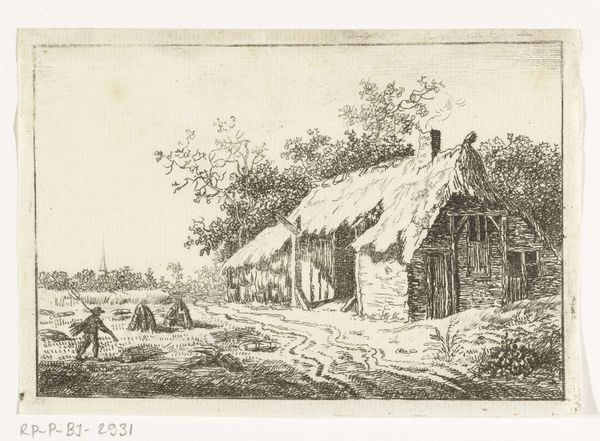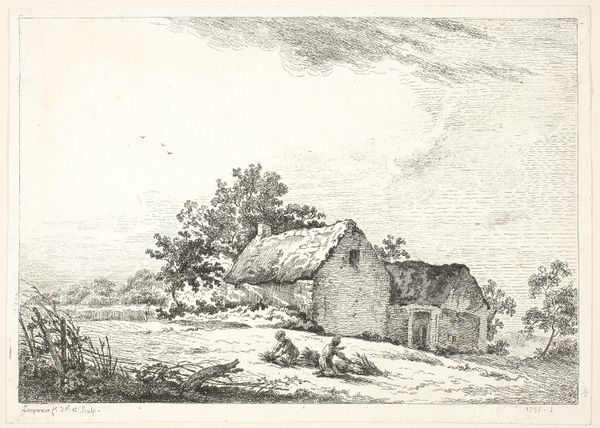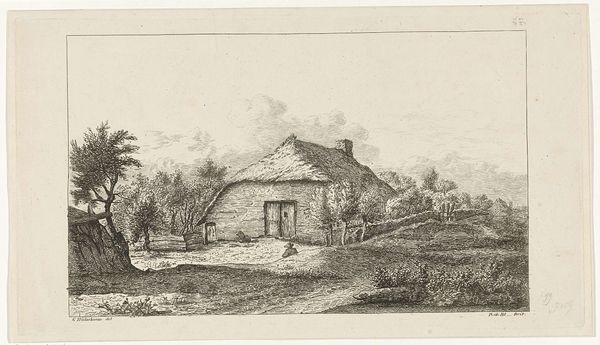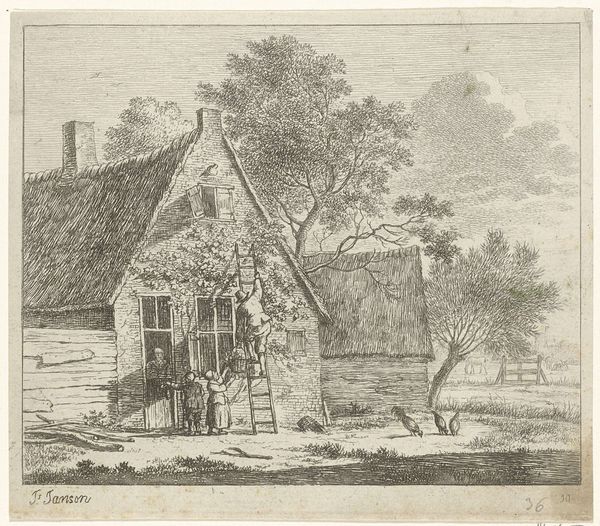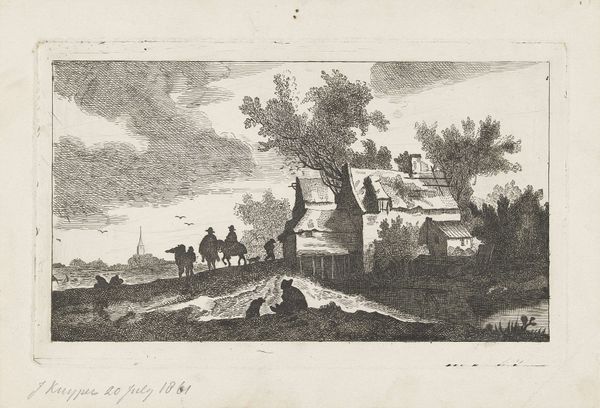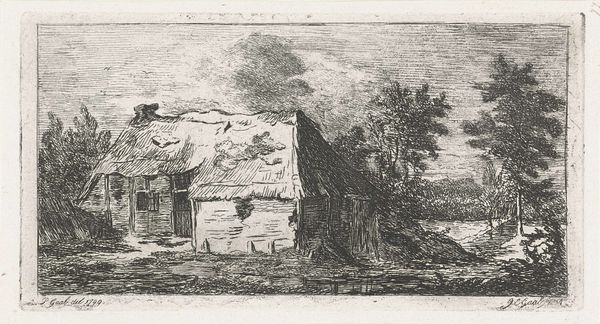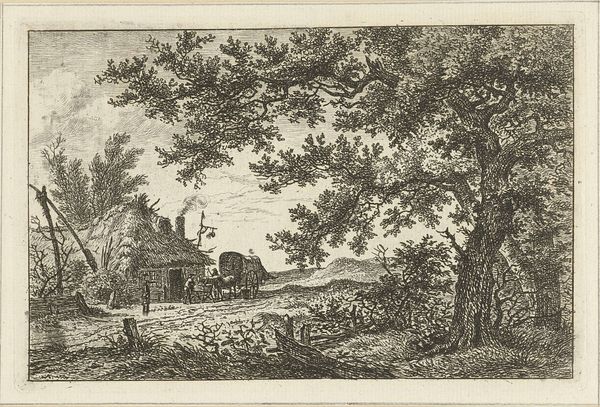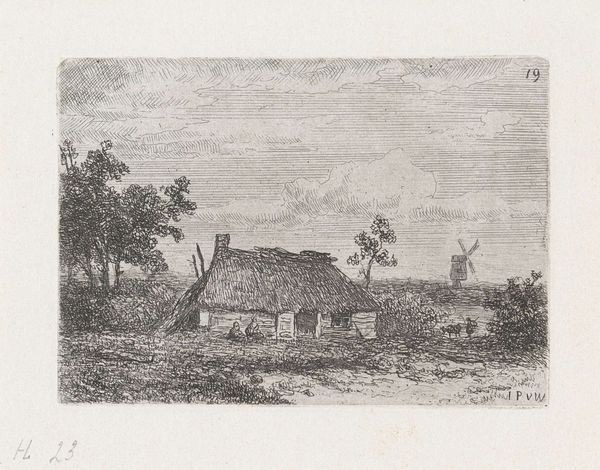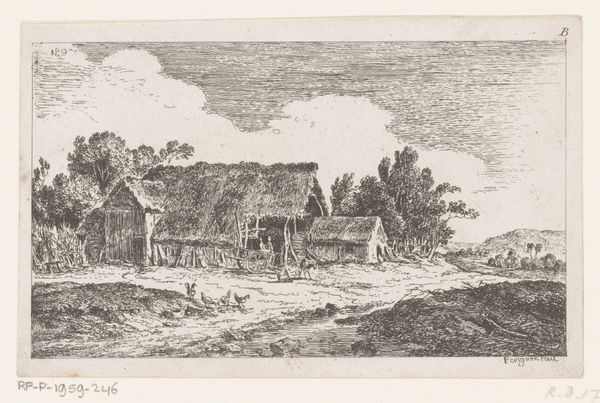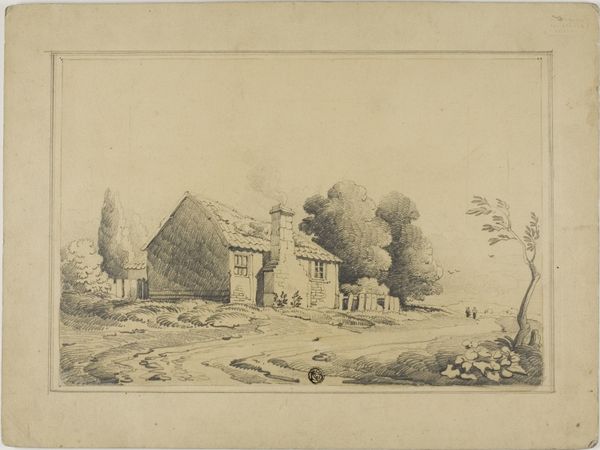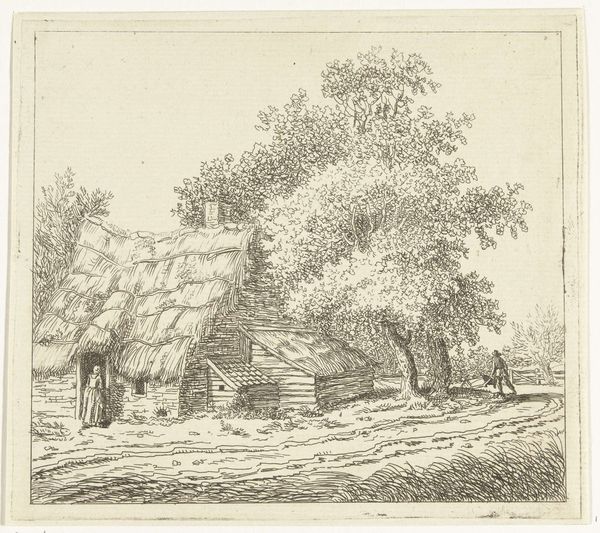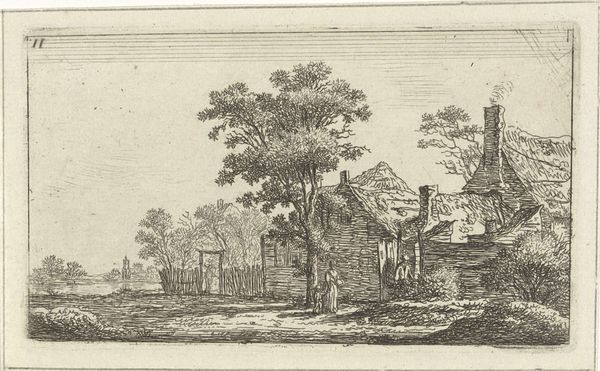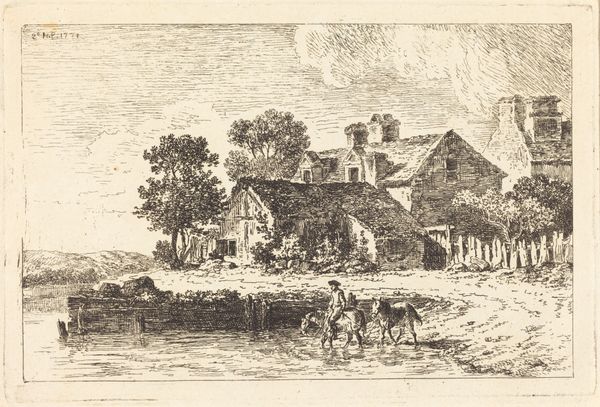
drawing, print, etching
#
drawing
# print
#
pen sketch
#
etching
#
pencil sketch
#
landscape
#
genre-painting
Dimensions: height 100 mm, width 140 mm
Copyright: Rijks Museum: Open Domain
Editor: This is "Man with Cow Before a Shed Outside Hattem" by Anthonie van den Bos, dating from around 1778 to 1838. It’s an etching, a simple scene, almost…idyllic? What strikes me is the stark contrast between the well-defined foreground and the hazier background. How do you interpret this work? Curator: I see it as a window into a specific socio-economic structure. Genre paintings such as this are often interpreted through rose-tinted lenses, as picturesque scenes of rural life, ignoring underlying power dynamics. Van den Bos situates us in a period where the Netherlands still greatly relied on an agrarian economy, the labor provided by rural folk and animals. Consider the labour this man and cow are performing. What relationship might we perceive between the man and the cow? Is this image also speaking to human-animal relationships? Editor: That’s a good point. I hadn't considered the economics of it, just the surface level of the pastoral scene. You are right to highlight the man/animal relation, it makes you wonder what their daily existence might have been. But is it problematic to read too much of modern power structures onto what might have been ordinary at the time? Curator: It’s vital to critically examine images precisely *because* they seem ordinary. Whose normal are we talking about? These artworks shaped cultural perceptions of rural life. We need to consider whether these idyllic representations perpetuated existing inequalities. This image isn't just about aesthetics, it's a socio-political document. Editor: So, by understanding its original context and how it might have masked social realities, we can better appreciate its historical significance. I am learning a lot from this exchange of views. Curator: Precisely! By viewing this artwork as more than just a quaint scene, but rather as a complex negotiation of labor, social roles, and possibly, even a veiled social critique, we gain a richer understanding of both the art and the society that produced it.
Comments
No comments
Be the first to comment and join the conversation on the ultimate creative platform.
